
The Short Version: What Quadrant Captures You in Most Work Conversations?
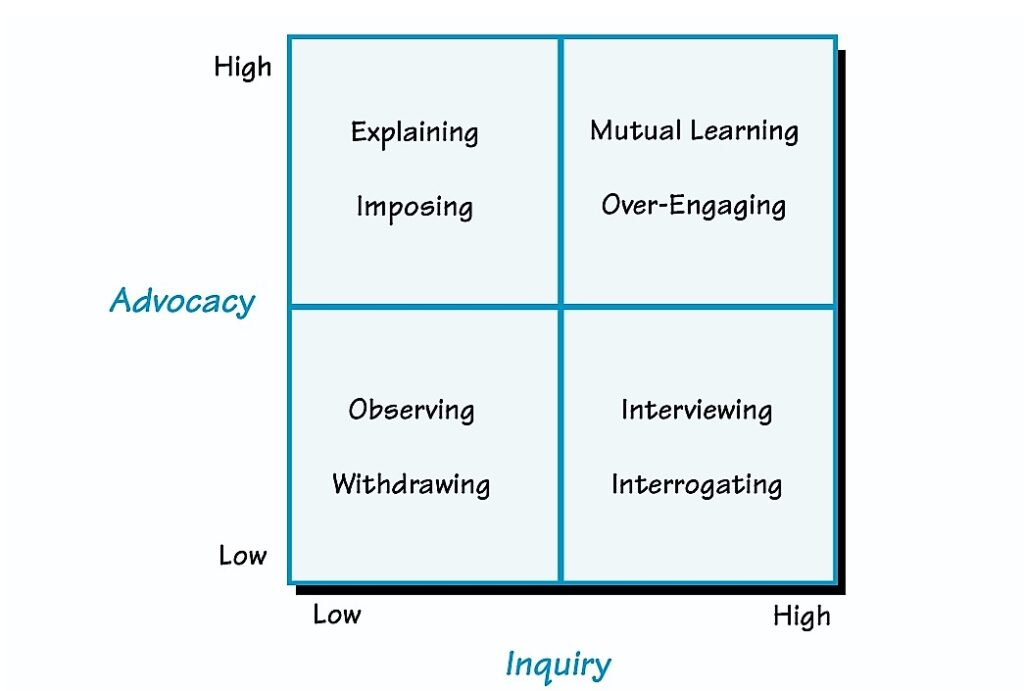
Consider your most recent work conversation with colleagues. If you had to characterize your own behavior during that meeting, which end of the square best describes how you operated most of the time? And, for fun, figure out where the other people in the meeting would fit in this diagram.
High in advocacy? Focused on explaining what you think or what you believe needs to be done? Does he get so high there that you dominate conversations and impose your views? (I’m pretty sure that ‘mansplaining’ fits in this upper right hand corner of our 2 x 2 model.)
Or are you at the diagonally opposite corner of this square being high in inquiry? Does your behavior there show itself as sincere questioning or calculated grilling?
Can you see how the extremes of either of these behaviors might not be helpful, but that in order to reach the best possible understanding of the reality faced in a particular situation that a combination of advocacy and inquiry, what Ross and Roberts called a balancing, might be the most effective tactic?
And while our overall goal might be to get to the upper right hand corner of this model where mutual learning occurs, there are times for all of us but especially for those less extroverted that being in that lower left-hand corner of observing adds significant value to the exchange. That’s why understanding our current patterns and how we might switch to a greater balance of advocacy and inquiry provides us with a highly useful tool.
So, let’s start to achieve a better discernment of the ‘four corners’ of this model of Balancing Advocacy and Inquiry.
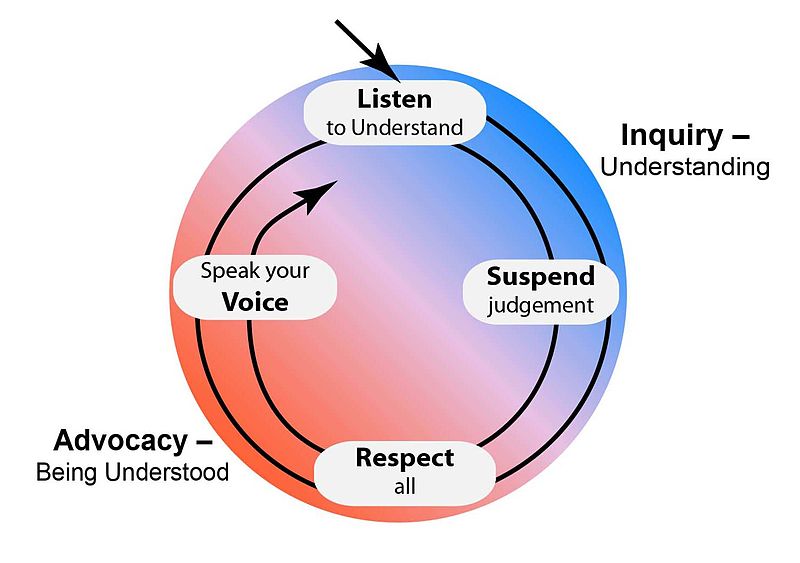
Introduction
- The publication in 1994 of the Fifth Discipline Field Book authored by Peter Senge and a host of other experts was a watershed moment in organizational development. Never before had a book that referred to both organizational learning and personal mastery reached such a wide audience. One of the most useful chapters in the book was by Charlotte Ross and Rick Roberts* on Balancing Advocacy And Inquiry; clicking on that last link will take you to the Google Books representation of the chapter. (Strangely, some of the additional sources that I include at the bottom illustrate the method aptly, but don’t credit Ross and Roberts who were seminal influences not just with this tool but with all of the writing.)
- Here’s an excerpt from their introduction to the topic: ”Managers in Western corporations have received a lifetime of training in being forceful, articulate ‘advocates’ and ‘problem solvers.’ They know how to present and argue strongly for their views. But as people rise in the organization, they are forced to deal with more complex and interdependent issues where no one individual knows the answer, and where the only viable option is for groups of informed and committed individuals to think together to arrive at new insights. At this point, they need to learn to skillfully balance advocacy with inquiry.” After thirty years, do you think that the leadership of organizations has gotten much better at encouraging informed and committed individuals to think together to arrive at new insights? I do, and while there are lots of instances where not just advocacy but the loudest and most persistent voice in the room and even unhelpful influence the application of this tool puts an individual in a stronger position eventually. We’ll review their basic model on this page.
The goal is good decision-making
How do we produce results?
• What is the sequence of activities that leads to a result?
• What comes before action?
Exchanging of knowledge and information to build a model of the reality we face. Of course, we don’t always put it that way but doesn’t that phrase describe what a team does before tackling a problem whether it’s a new sales plan, a delayed project, or the need to outdo a competitor? The best models of reality arise from a mixture of views. Or what my friend, Nancy Dixon, refers to as collective sensemaking.
1.Circles connect
2.Connection before content
3.The small group as the unit of learning
4.Physical space changes the conversation
5.Divergence before convergence
6.Cognitive diversity to increase innovation
7.Visible ideas to span boundaries
8.Shared experience to build shared understanding
9.Enable all voices to be heard
Divergence before convergence requires balancing advocacy versus inquiry
Think of the square above again. If everybody’s in that upper left-hand corner of advocacy then no one is really listening to other points of view, but just trying to get the wrong way. Therefore, there is not going to be any true consideration of a variety of possibilities, what Nancy refers to as divergence. More likely, someone is going to be louder and more forceful than the others who will give up. Similarly, if everybody’s in that lower right-hand corner just asking questions then there won’t be enough opinions to consider to get to that same divergence. The image below illustrates what were really looking for in such conversations.
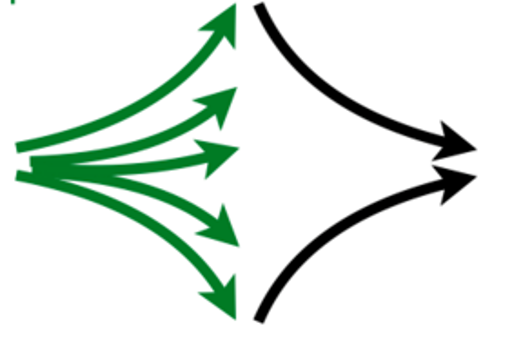
- If we have a balance of advocacy and inquiry, then we can fill in knowledge absences, some of which we may not even know that we have.
- If we have a balance of advocacy and inquiry with people who are in different positions and have had different experiences, then that lifts us out of the cognitive trench that may have become our home because we are expert in one particular area.
- If we have a balance of advocacy and inquiry, everybody feels like they’re involved and that leads to all sorts of wonderful cultural features such as engagement, trust, and satisfaction.
So, how do you achieve the right balance?

Realize that…
• It’s not automatic to get to a “good enough” approximation of reality, test it, and then change it as needed.
• Our values tend to influence our perceptions, and thus our decisions are not based purely on fact, or reality.
• Many people fail to recognize that they select certain facts and brush aside others, guided by their “ought to be” model.
• Many managers — senior and junior — don’t acknowledge the subjective element of “what ought to be” in their decisions.
Deal with the reality
Large organisations tend to socialise leaders to be forceful, articulate advocates and problem solvers. We have been trained, generally by the modelling of others, about how to present and argue strongly for our views.
Ross and Roberts
“In business conversations, we often believe that our definition of what needs to be accomplished, and how it needs to be accomplished, is the only valid one.” Fred Kofman
Start by exposing your reasoning — how you reached a conclusion
•“When balancing advocacy and inquiry, we lay out our reasoning and thinking, and then encourage others to challenge us.
•‘Here is my view and here is how I have arrived at it. How does it sound to you? What makes sense to you and what doesn’t? Do you see any ways I can improve it?’ “
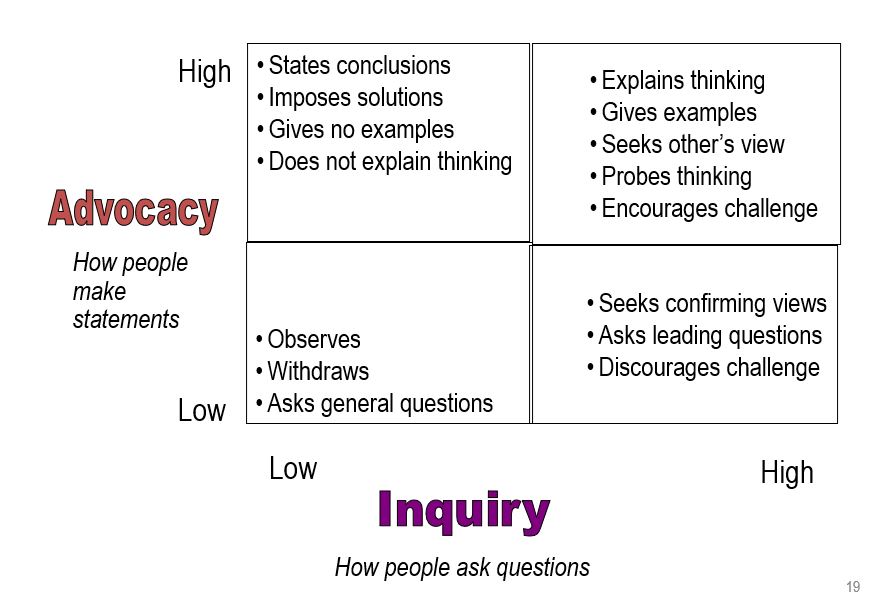
We don’t recommend inquiry alone
•“People almost always have a viewpoint to express, and it is important to express it — in a context, which allows you to learn more about others’ views while they learn more about yours.
•Nor do we recommend that you switch in rote fashion from an adamant assertion (“Here’s what I say”) to a question (“Now what do you say?”) and back again.
Ross & Roberts
Balancing inquiry and advocacy means developing a variety of skills
•“It’s as if all the “colors” of conversation could be spread out on an imaginary palette. As the creator of your part of the conversation, you should be able to incorporate styles from all four quadrants of the palette.”
–Ross & Roberts
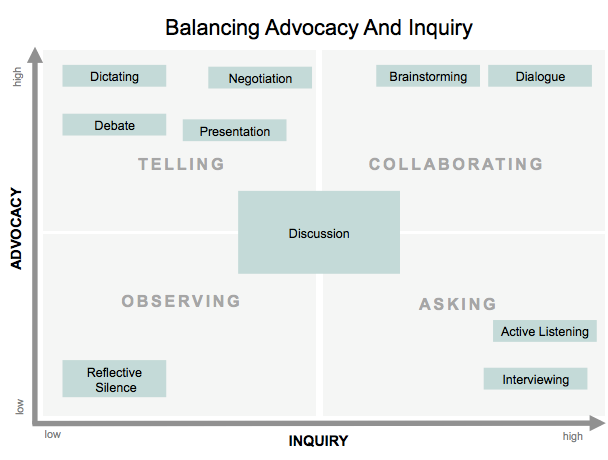
There is a guide to a reflective practice in our conversations, a way in which we both share our views and probe the ideas of others
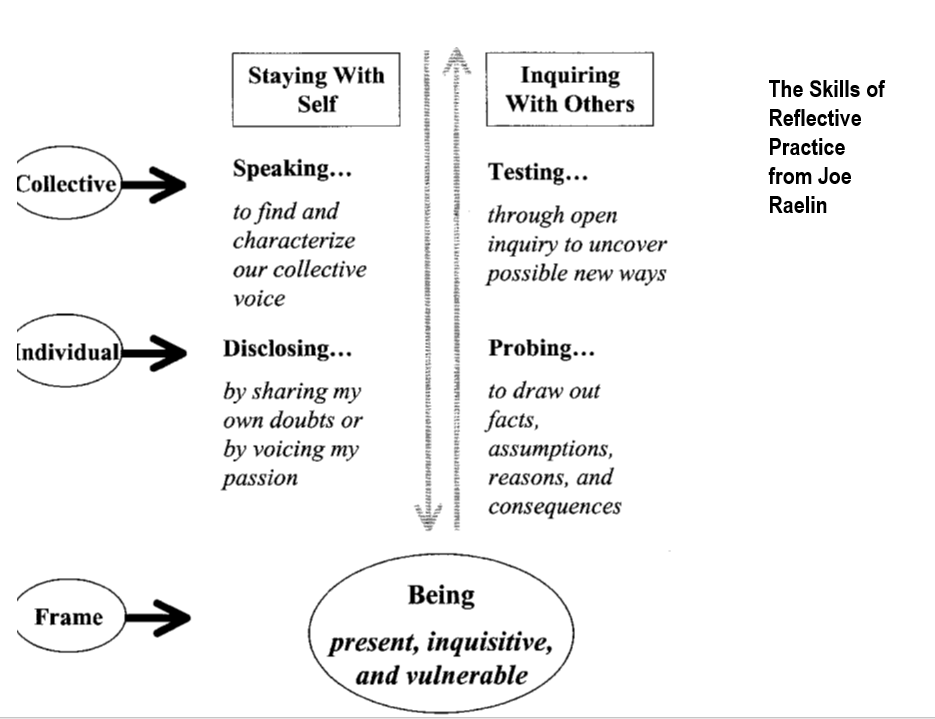
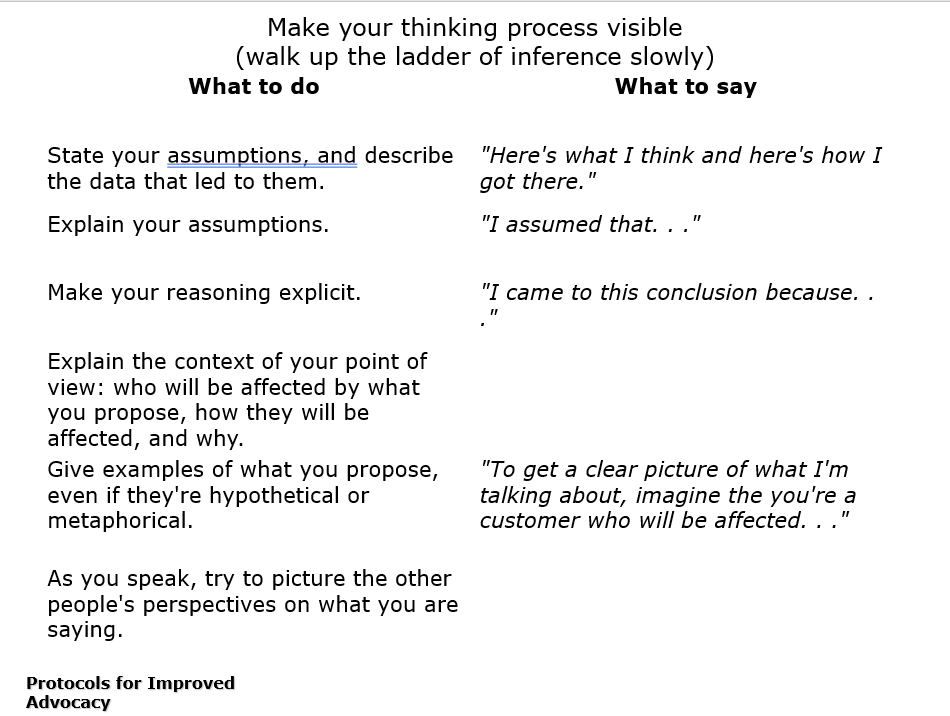
And the other side, which we tend to ignore more than advocacy: INQUIRY
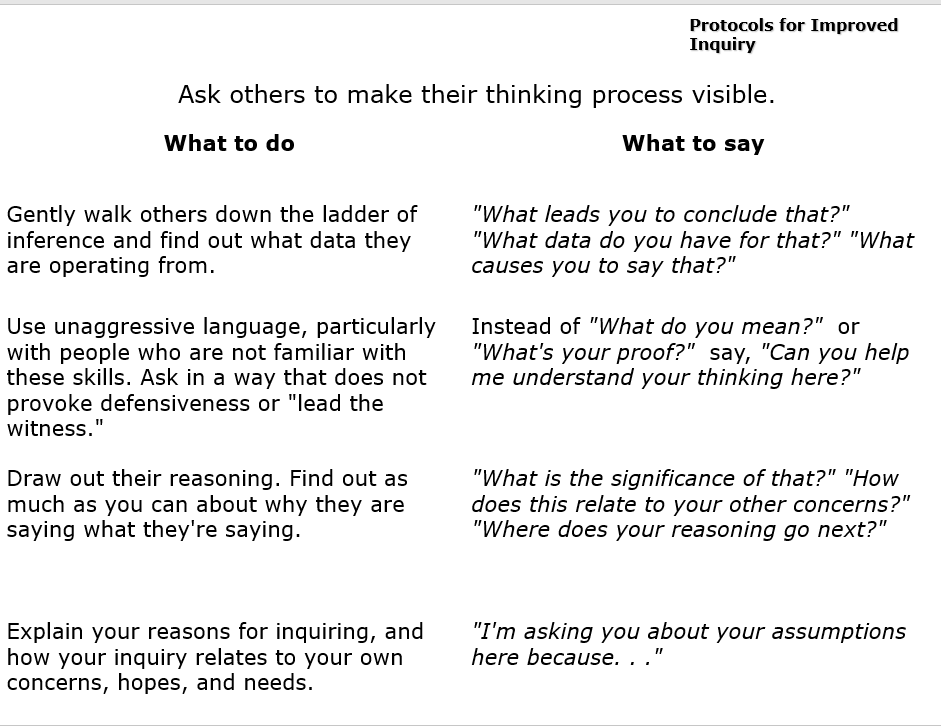
Other sources for Advocacy & Inquiry
ADVOCACY AND INQUIRY by Phillip McArthur
PRODUCTIVE CONVERSATIONS: USING ADVOCACY AND INQUIRY EFFECTIVELY by The Systems Thinker
Using Advocacy and Inquiry to Improve the Thinking Process of Future Managers
Ladder of Inference
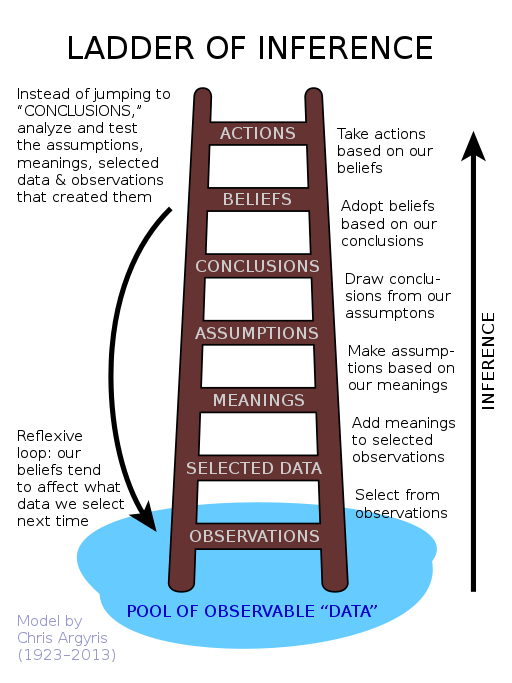
* Tragically Rick Ross who was as wonderful a person as he was a thinker and consultant had the misfortune to be a passenger on one of the planes on 9/11. His obituary is here.
Advocacy vs. Inquiry Lecture: YouTube Snippets
What it means to balance advocacy and inquiry
Combining multiple perspectives into one powerful image
How to Know the Balance between Advocacy and Inquiry